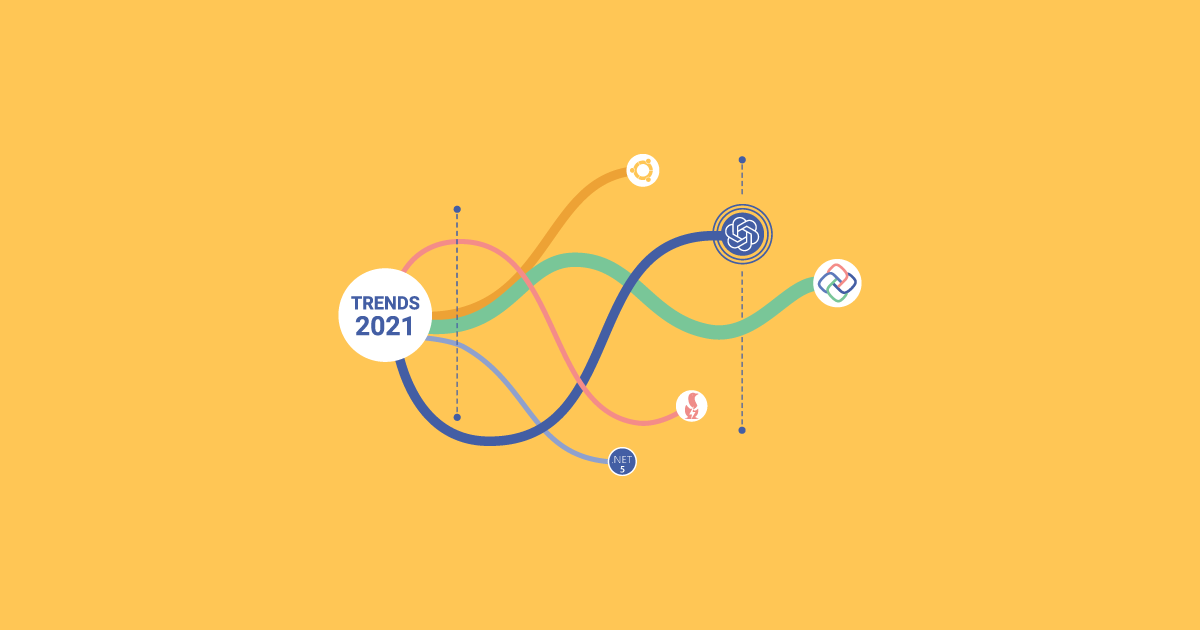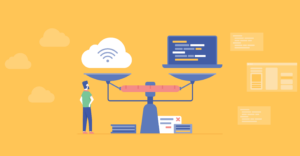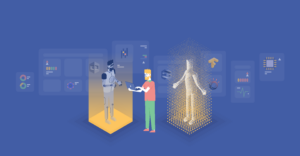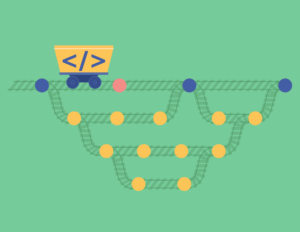If you enjoyed our 2020 Trends edition, we hope you’ll be keen to know what 2021 has to offer.
Top Technology Trends in 2021:
To quickly find the technology trends of 2021 that you are interested in, have a look at the list below:
As per tradition, at the end of the year, we publish our review of some of the emerging trends in software engineering. In order to make these assumptions, we refer to our expertise, current news reports and the requests of our customers and prospects. If you are curious, by the way, here’s last year’s article, in which we predicted the COVID-19 pandemic (just kidding, we were as shocked as you were 😲).
Yes, even though in many ways, 2020 does feel like a lost year, when it comes to digital transformation, software technologies are as eventful as ever. This is why it is so important to keep abreast of the current trends taking place in your industry, as this will allow you to make better decisions and stay ahead of the competition. But what then does the post-pandemic world of software development have in store for us in 2021? Join our SPG experts today as we dive in to find out:
What Are the Latest Trends in Software Development?
Virtual Reality
This year, virtual reality sits at the top of the latest software trends. After all, the launch of Facebook’s Oculus Quest 2 may be the tipping point for VR adoption, as it not only frees the user from a desktop computer but offers a high-end — and at £299, truly affordable — immersive experience. Both tech-savvy entrepreneurs and software developers immediately jumped at the idea, and as a result, new VR applications are being built every day. These provide exciting opportunities for the fields of engineering, healthcare, e-commerce, education, digital marketing and other important areas of the business.
Even better, with projects such as WebXR, VR is becoming increasingly more accessible. The shift to remote work has even created a movement which advocates virtual offices with elements of gamification. So who knows then, ladies and gents? With all these advances in virtual reality, we may soon all be working from virtual offices in a collaborative VR environment. In fact, this entire article is being written from the comfort of a virtual café.

Cloud Technology Trends in 2021
Multi-Cloud Infrastructures
With the recent major AWS outage, companies would do well to consider a multi-cloud environment for their businesses. As the name suggests, this is where enterprises combine in-house operations with multiple cloud providers to increase the resilience of their applications and services. In this way, they can maximise the benefits of each individual platform while mitigating the downsides such as data loss or occasional downtime. Other benefits, however, include avoiding vendor lock-in and achieving optimal performance.
Next year, Amazon will also be launching Amazon ECS Anywhere, which in addition to the AWS-managed infrastructure includes data centres on the customer’s premises. Consequently — unlike now, where this is significantly harder to achieve — in case of loss of connectivity, all tasks should continue running on the customer-managed infrastructure.
Quarkus
Quarkus may be the latest of a series of trends in open-source development, but it is poised to become the very future of Java. Created by Redhat, it is a full-stack framework for Java virtual machines which allows the development of so-called cloud-native, or “Kubernetes-native” applications (written in Java, Kotlin or Scala). In addition to improving container-native start-up times, execution costs and productivity, Quarkus simplifies the life of software developers by offering the return of live reload and providing unified configuration.
Spring Boot
In 2021, Spring Boot will also continue to be a great choice for the Java platform. The framework makes it easy to create standalone Spring applications by providing a flexible solution to configuring database transactions, Java Beans and XML, in addition to enabling batch processing and reliable REST endpoint management. Best of all, Spring Boot streamlines dependency management and automatically configures applications.
Micronaut
Another framework to keep an eye on is Micronaut, the up-and-coming JVM-based juggernaut, as it may actually be the best technology to learn in 2021. By default, the framework supports the most popular cloud features — including Eureka, Kubernetes and Netflix Ribbon — without depending on any third-party services. It also provides developers with support for AWS Lambda functions, which makes it easy to create serverless applications.
No-Code/Low-code Technology Trends in 2021
Who says you need software developers to launch your software product anyway? As market leaders Google and Amazon have demonstrated, further development of low-code and no-code platforms is making software development more ubiquitous than ever. Though to some degree, low-code software still requires coding by individuals knowledgeable about programming, it has now become faster — and cheaper — than ever before.
No-code software, on the other hand, takes this low-code concept to a whole new level and depending on who you ask, could or will have a dramatic impact on the future of software development. What does appear to be clear, however, is some development will shift to non-programmers — or to what some are calling “citizen developers”.
No-code and low-code platforms enable companies to serve customers worldwide without the burden of maintaining their in-house developers. In this way, businesses can create websites from predeveloped building blocks, set up data exchange with CRM solutions, add online payments via Stripe, and even gather customer feedback via Google Forms or another provider. Entrepreneurs, in turn, can minimise their time-to-market and evaluate their product or business concepts in earth-shattering record time.
Check out Google Appsheet, Amazon Honeycode, Oracle APEX and the IBM Automation Platform to get a sense of all of their features and see their visual app editors in action!
More Multi-Platform Frameworks
Multi-platform frameworks are also becoming increasingly more common, and this couldn’t have come at a better time. After all, they enable companies to reutilise virtually their entire business logic and UI across mobile, desktop and web platforms with little effort and in one fell swoop. A great example is the Uno Platform, which can empower your existing .NET teams with pixel-perfect multi-platform applications. Another alternative, however, can be Xamarin.
Cross-Platform vs. Multi-Platform: What Is the Difference?
A quick note: although for end users, there is arguably no difference at all, cross-platform development means utilising a tool that will enable developers to write code once before building it for multiple platforms. Multi-platform development, on the other hand, implies that the same code will be capable of running on a variety of different platforms.
Rival Technologies: Rust vs. C++, Flutter vs. Electron
When it comes to creating system tools, Rust will likely take over a substantial portion of the C/C++ share of the market, while Flutter and Dart are expected to continue improving their support for the desktop — and therefore compete with Electron for this particular segment of the market.
The ARM Chip
Microsoft’s grand experiment with the Surface Pro X appears to be catching on, as more and more devices are making the switch to the ARM architecture. This is largely due to its simpler design, energy efficiency and the possibility of app portability. Apple itself have recently left Intel behind with their MacBook Pro’s new M1 chip touting “up to 2.8x CPU performance, up to 5x the graphics speed [and] up to 11x faster machine learning.” There will doubtless be growing pains, but the potential for future applications is enormous.
Deep Learning Technology Trends in 2021
Despite some noticeable hype, there is much to be excited about OpenAI’s new GPT-3 language model. Not only does it comprise what is arguably the largest and most sophisticated neural network available today, but it can create anything with a language structure — from poetry to creative fiction to even taking a stab at computer code. In fact, it accomplishes this last feat at the impressive level of a junior developer. Nonetheless, recent reports have suggested that the technology is still a far cry from the singularity that it appears to be, and Sam Altman, the CEO of OpenAI himself, has admitted it is but an “early glimpse” of the future. Even so, since making its API available last June, the Elon Musk-founded company has become the talk of the town, so we’ll have to wait and see what comes of it.
Databases
Last year, the world continued to witness the extraordinary expansion of data. With this remarkable growth, up until now, one would usually have to invest in additional DBA services. Yet today you can enlist the help of a number of different AI advisors, like EverSQL and Postgres.ai, and save money by integrating these services into your business’ development process.
On the other hand, DB providers such as Oracle are extending their set of solutions with more modern autonomous databases. If you are unfamiliar with this term, it refers to a cloud database that — according to Oracle’s website — makes use of machine learning to “automate database tuning, security, backups, updates, and other routine management tasks traditionally performed by DBAs.”
Moreover, unlike a conventional database, an autonomous database can perform these operations and more without any human intervention at all.
.NET 5
Earlier this month, Microsoft released .NET 5, a major update to the .NET platform which aims to provide developers with a unified cross-platform experience. The platform supersedes .NET Core 3.1 and .NET Framework 4.8 and makes their various headache-inducing flavours — i.e. .NET Standard, Mono, etc. — entirely obsolete. In addition, .NET 5 also comes with C# 9, the latest version of the platform’s programming language with exciting new features of its own. And while unfortunately, .NET MAUI, the greatly anticipated evolution of Xamarin.Forms, has been delayed due to the coronavirus pandemic, the life of .NET developers has already been made significantly easier.
WSL: Native Linux Applications on Windows
Windows is becoming more developer-friendly. In what seemed like a pipe dream a mere decade ago, not only have Microsoft released what essentially is a reverse version of Wine, the popular Windows compatibility layer on Linux — which means you can now run native Linux applications on Windows — but beyond the Windows Subsystem for Linux (WSL), we have also been blessed with a swanky new Windows Terminal with support for tabs, split panes, multiple session types and just about everything we ever wanted from it. What a time to be alive!
Lower App Store Commissions and Lower Cloud Infrastructure Costs
And finally, to top off the list of technology trends in 2021, different platforms are getting cheaper! Not only have Apple announced their App Store Small Business Program, which will reduce App Store commission by 50 percent for all companies earning $1 million a year or less, but cloud infrastructure expenses are also expected to take a downward turn. For this reason, it may be cheaper to make use of a cloud provider if you are currently running your own on-premise infrastructure. And who knows? If we’re lucky, we might even end up benefiting from some exciting new games as well!
Despite our lack of a crystal ball, as we hope this article has made clear, there is plenty to look forward to in the coming year. We hope you’re as excited as we are to consign 2020 to history and wish you a wonderful and prosperous 2021!
See also: Trends in Software Development 2023
What are your plans for 2021?
What does your roadmap look like for the upcoming year? Will you require any software development or DevOps support?
Contact Us


